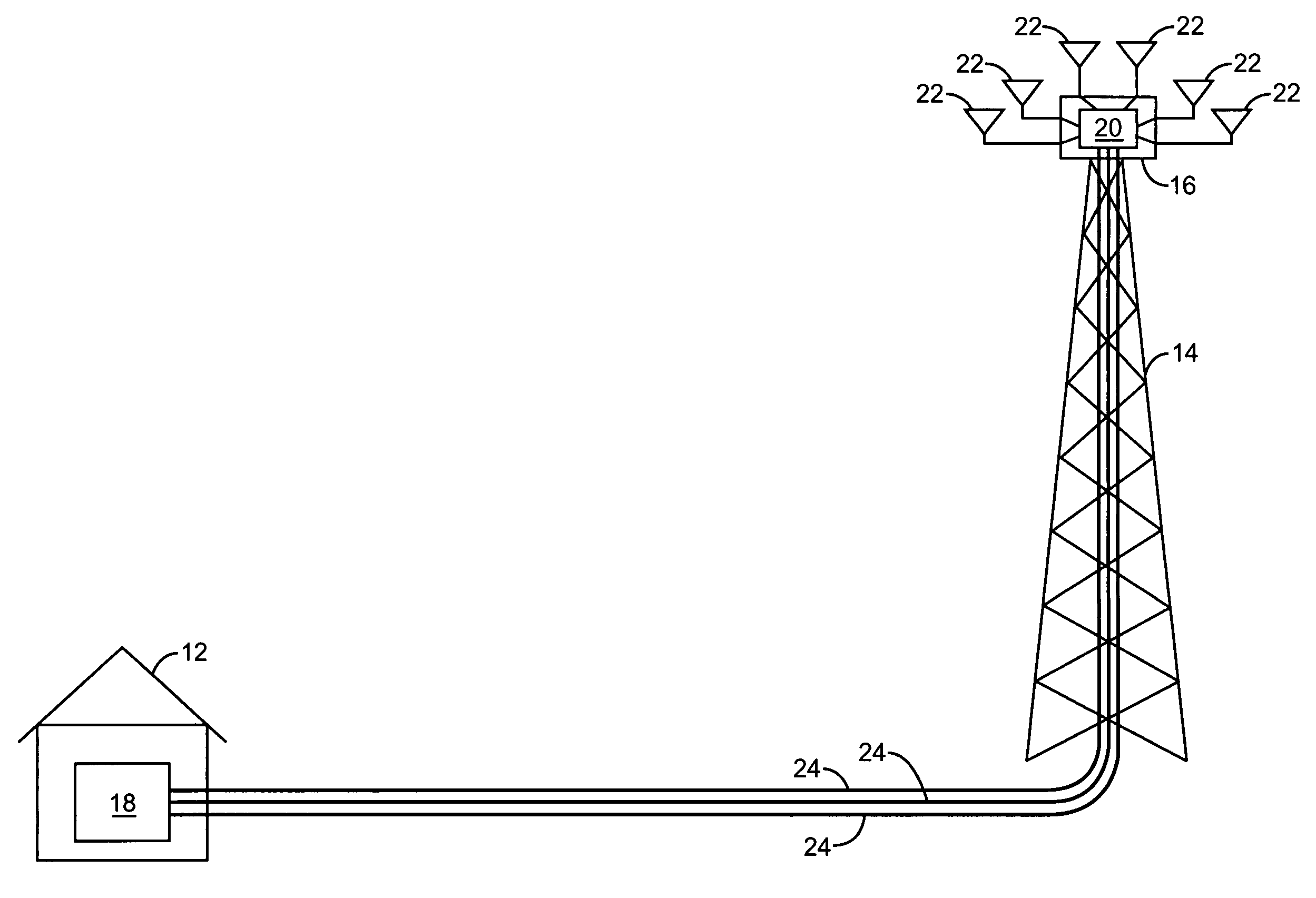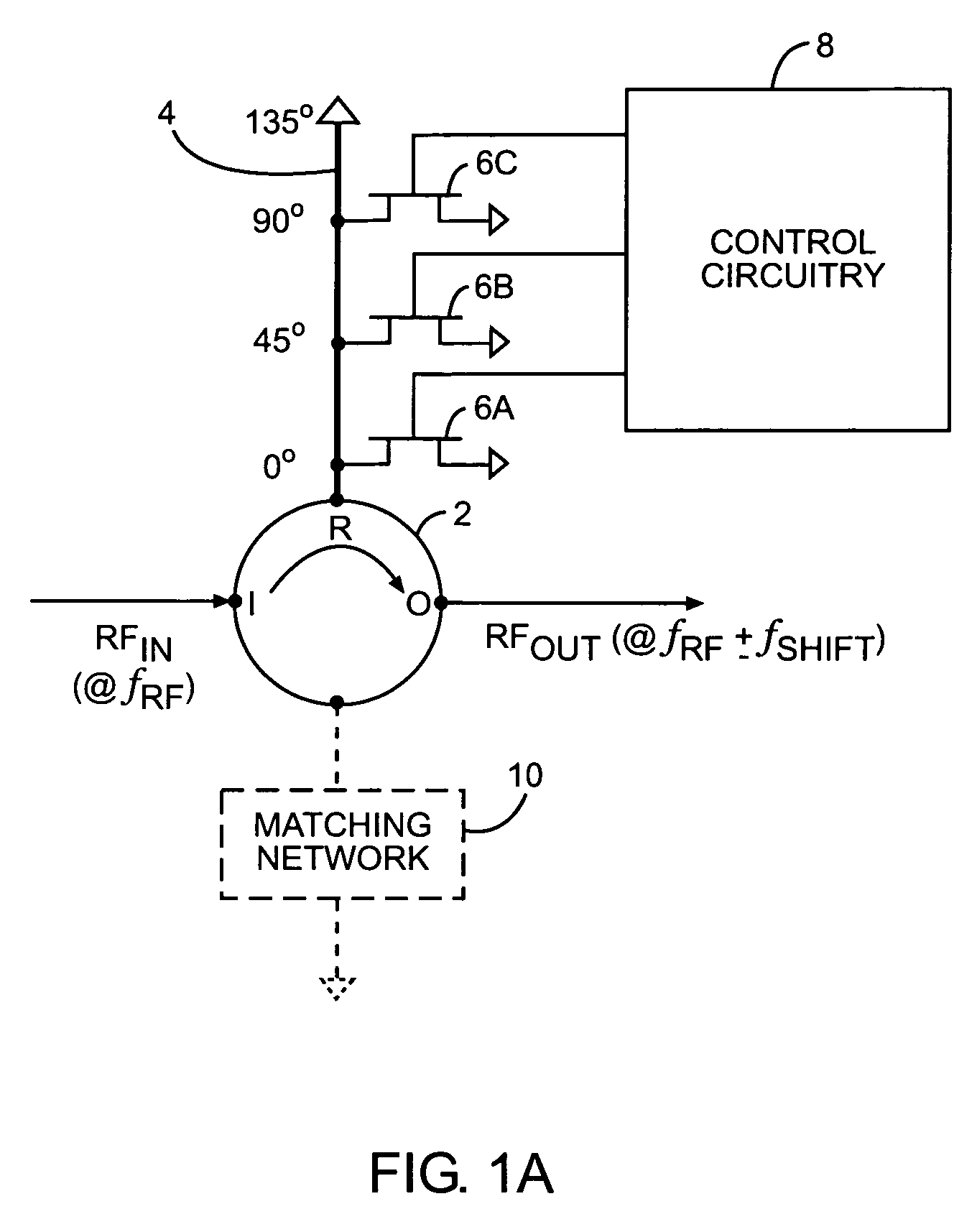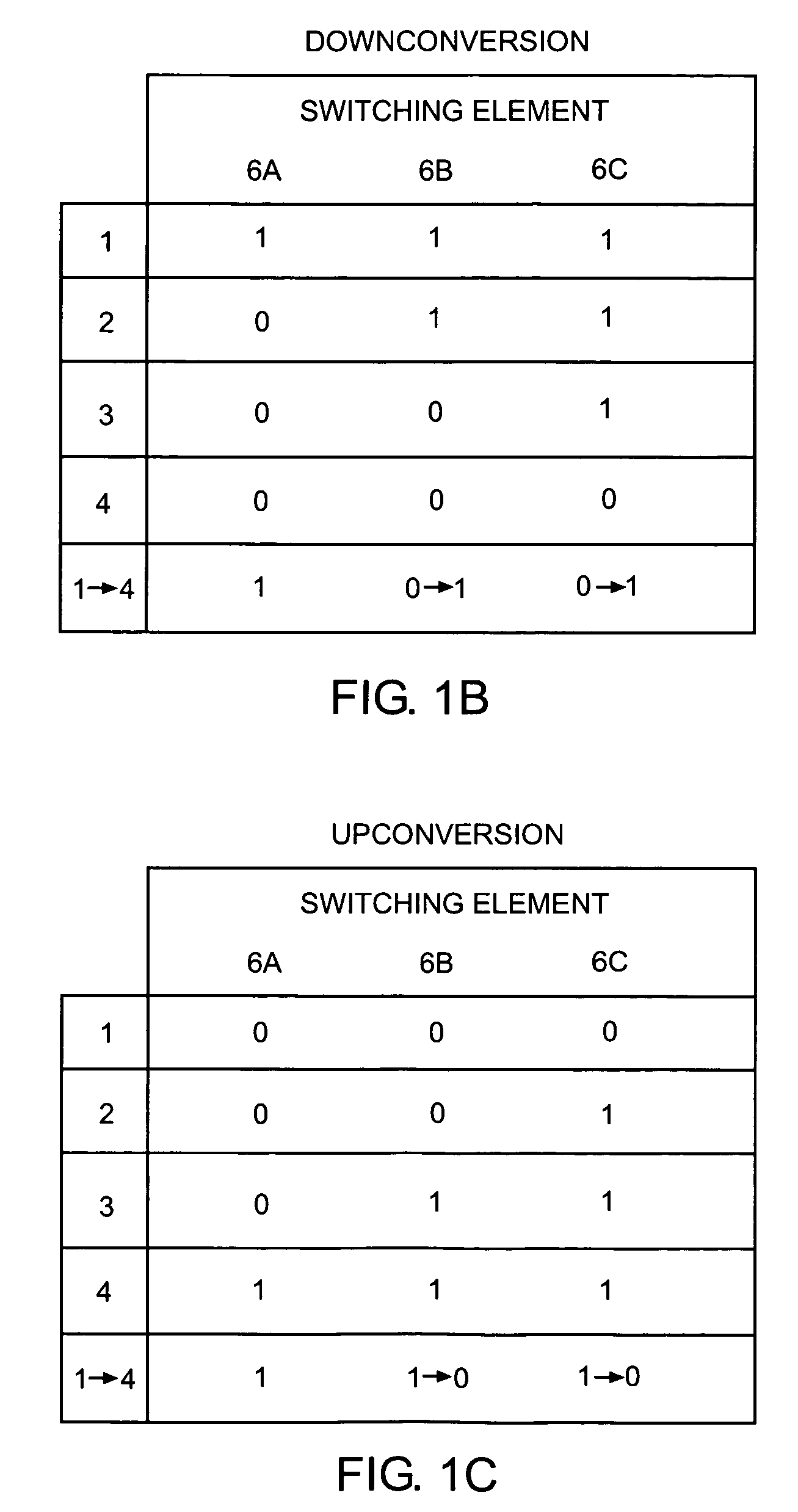Frequency translation
a frequency translation and frequency technology, applied in the field of radio frequency communication, can solve the problems of mixing mixers often suffering from poor linearity, injected loss in signal path, and requires additional filtering or waste, so as to avoid irregularities and minimize complexity
- Summary
- Abstract
- Description
- Claims
- Application Information
AI Technical Summary
Benefits of technology
Problems solved by technology
Method used
Image
Examples
first embodiment
[0023]Turning now to FIG. 1, a block representation of serrodyne-based frequency translation circuitry is illustrated according to the present invention. In general, the frequency translation afforded by the present invention provides for single sideband frequency translation to essentially provide Doppler shifting of a radio frequency input (RFIN) at a first frequency, fRF, to a translated radio frequency (RFOUT) at a frequency of fRF±fSHIFT, wherein fSHIFT represents the amount RFIN is being translated in frequency. The single sideband frequency translation minimizes waste of the available frequency spectrum.
[0024]As illustrated, a multi-port frequency coupler 2, such as a circulator, is associated with a delay line 4 having a defined electrical length. The delay line 4 is divided into a number of sections, and in the present example is divided into three sections, wherein nodes defining the boundaries of each section are selectively coupled to ground through a corresponding switc...
second embodiment
[0048]Turning now to FIG. 7, the cabling reduction system is illustrated. In this embodiment, the main receive signal is not translated, while the diversity receive signal is translated. Thus, the main receive signal and a translated diversity receive signal are combined in the masthead electronics 20 and sent over the feeder cable 24 to the base housing electronics 18. In particular, the main receive signal is received at main antenna 22M, and forwarded to combining circuitry 40 via the duplexer 28, and through an LNA 30. The diversity receive signal is received at diversity antenna 22D, filtered by the filter 34, amplified by the LNA 36, and translated from the first center frequency fC1 to a second center frequency fC2 by the diversity frequency translation circuitry 38. The main receive signal and the translated diversity receive signal are combined by combining circuitry 40 and sent to duplexer 26 for delivery to the base housing electronics 18 over the feeder cable 24. Upon re...
PUM
 Login to View More
Login to View More Abstract
Description
Claims
Application Information
 Login to View More
Login to View More - R&D
- Intellectual Property
- Life Sciences
- Materials
- Tech Scout
- Unparalleled Data Quality
- Higher Quality Content
- 60% Fewer Hallucinations
Browse by: Latest US Patents, China's latest patents, Technical Efficacy Thesaurus, Application Domain, Technology Topic, Popular Technical Reports.
© 2025 PatSnap. All rights reserved.Legal|Privacy policy|Modern Slavery Act Transparency Statement|Sitemap|About US| Contact US: help@patsnap.com



